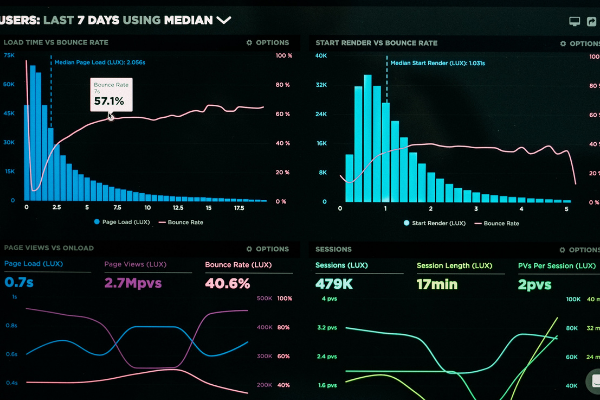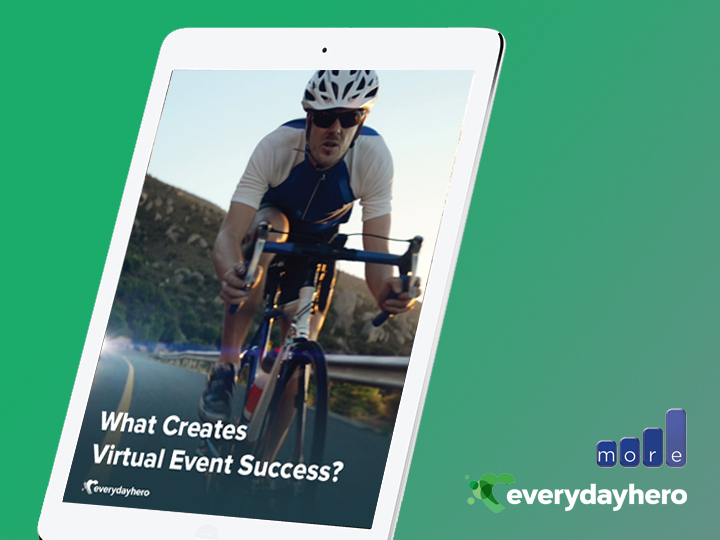Insights
INSIGHTS
All Topics
Virtual events: understanding the data and metrics
11 May 2020by Christine Chiu
We examine how virtual events can help you gain vital insights about your supporters
By swapping in-person events for virtual ones, charity digital leaders have successfully recovered events that would otherwise have been cancelled. There are a number of benefits to this: virtual events can provide just as much, if not more data on supporters and donors. Equally, many virtual events can offer promising leads for support and digital donations.
Many charity leaders may still be sceptical around the success of virtual events. At Charity Digital, we want to demystify the approach. Ahead of reviewing the data and metrics of virtual events, taking a look at how virtual events offer opportunities to capture more data over IRL ones is important.
Gathering virtual event registration data
Virtual events allow charities to capture demographic information during the registration process. The data can reveal a lot about charity audiences – identifiers such as age, gender, location can be used to refine later marketing and communication preferences. With registration, charity digital leaders can also think about the email open-rate and click-through rate. Mailchimp, the marketing automation platform, notes that the average non-profit sees an email open rate of around 25%, while the click-through rate is closer to 3%.
With the virtual events’ registration process, data can be gathered and tailored for marketing shortly before the event itself – by adding delegate names or supplementary offerings to communications, charity digital leaders can ensure that their emails are opened and read. According to CauseVox, the digital fundraising software provider, personalised emails increase click-through rates by an average of 14%, showing how important it is to tailor messages.
Virtual events can help charities link digital efforts together
Gauging audience engagement and interest in person is easy – charity digital leaders can just look at faces and audiences. However, digital events can help charity leaders evidence their successes. Most virtual event platform providers offer real-time polling and surveys, so organisers can gather feedback instantly.
High-end virtual event providers can also offer a suite of services – downloadable apps, social media sharing, live chats, presentation tracks, searches, and advertisements can be used by charity digital leaders. For a range of options, platform providers like inexpo, WorkCast, and iVent can deliver both high-end solutions and simple webinars.
Depending on the sophistication of the virtual event, a wealth of data can be gathered in real-time including:
- Social media engagement at virtual events – Creating a microsite, virtual event hashtag, digital fundraising buttons, and share/like features means supporters can still spread the cause online. Better yet, for charity digital leaders, the specific tags and links can be directly attributed to the event;
- Attendance data – Doing away with physical counting, virtual events track exactly who was attending which seminar, speaking event, Q&A or networking event. These metrics don’t have to be clumsily migrated from physical to digital systems. Attendance data can give insight into what audiences are interested in.
- Better CRM – Once registered and engaged, supporter data can be integrated with popular charity CRM systems like Salesforce and Hubspot. Unlikely to be visible during physical events, virtual events can help charity marketing and communications teams make connections between event delegates and those already logged into the CRM system. Unlike IRL events, delegate interactions can be tracked.
On concluding the virtual event, charity digital leaders can also think about following up with potential donor leaders. Event downloads and accessing content after the event could potentially indicate more interest further down the line.
Virtual events can hold their own
One of the most well-known metrics of measuring virtual events is ROI or return on investment. Most charity digital leaders will want to make sure that once the event is delivered, ROI is met. For non-profits, ROI could come across in a variety of metrics including:
- Net promoter score – simply based on answers to the question “How likely is it that you would recommend our company/product/service to a friend or colleague?” Event managers typically look at this score to figure out whether supporters are promoters or not. Answers rank on a score of 0-10, with promoters scoring 9 or more. Charity digital leaders can leverage promoter networks to increase reach.
- Cost per head – the smaller the better. Many event organisers will look at this measure to check whether benefits outweigh the costs of the event.
- Engagement – the number of supporters attending the event may be important to some charities looking to increase brand strength and reach.
- Fundraising efforts – likely to impact all non-profits, charity digital leaders might consider looking at the conversation rate from participants to actual donors achieved via the event.
While many of the above metrics can help support budgeting efforts, remember, virtual event goals and indicators of success should be defined ahead of launch. Afterwards, a data-driven decision-making approach can help charity digital leaders learn, improve, and re-design events and marketing approaches.
Christine Chiu
More on this topic
Recommended Products
Our Events
Charity Digital Academy
Our courses aim, in just three hours, to enhance soft skills and hard skills, boost your knowledge of finance and artificial intelligence, and supercharge your digital capabilities. Check out some of the incredible options by clicking here.




















